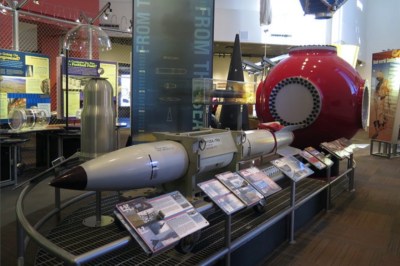The Biden administration has announced plans to develop a next-generation air-dropped nuclear gravity bomb, known as B61-13, an upgrade of existing bomb variants and a pointed response to fast-evolving security threats from near-peer adversaries China and Russia.
The decision to develop a higher-yield bomb derives at least in part from the US Department of Defense’s recent 2022 Nuclear Posture Review, which recommends the US should have additional nuclear options against certain “harder and large-area military targets.”
In a statement on the B61-13’s announcement, US Assistant Secretary of Defense for Space Policy John Plumb said the US “has a responsibility to continue to assess and field the capabilities we need to credibly deter and, if necessary, respond to strategic attacks and assure our allies.”
Breaking Defense reported that the B61-13 will have a yield of 360 kilotons, a much bigger blast than the B61-12’s 50 kilotons can deliver. The new variant will replicate the B61-12 in terms of safety, security and accuracy features, the report said.
Breaking Defense quotes Federation of American Scientists’ experts Hans Kristensen and Matt Korda saying the US will probably produce only around 50 B61-13s and that production will likely happen on the back end of the B61-12’s production schedule in 2025.
The report speculates that if the only change between the B61-12 and B61-13 variants is higher yield, piggybacking on the existing B61-12’s production line and moving the bomb into the field should be readily achievable.
The B61-13’s announcement may also signal a phasing-out of the costly to maintain B83 nuclear bomb amid wider ongoing efforts to consolidate older B61-3, -4, -7 and -10 nuclear gravity bomb variants. Production of the B61-13 does not mark an expansion of the US nuclear arsenal as it will use warheads from older bombs placed in new housings.

It was not immediately clear from reports how much the new variant would cost per unit.
The Breaking Defense report says that the B61-12 is expected to be certified for use by the F-35, F-15, F-16 and B-2, as well as Tornado aircraft in Europe.
Breaking Defense notes that the B61-7 is not designed for use by fighter jets and speculates that the B61-13 would also be restricted to bombers, namely the B-2 and, eventually, the B-21.
In describing the US nuclear threat environment, the 2022 Nuclear Posture Review explicitly mentions China as the overall pacing challenge for US defense planning and a growing factor in re-evaluating its nuclear deterrent.
It notes that China is expected to have a minimum of 1,000 nuclear-capable warheads that can be deployed by the end of the decade, according to recent reports.
This development could provide China with the ability to use nuclear weapons for coercive purposes in times of crisis or conflict, including launching military provocations against US allies and partners in the Pacific.
The document also mentions that Russia’s modern nuclear arsenal presents an enduring existential threat to the US, its allies and partners.
China and Russia are working on expanding their nuclear capabilities and also developing non-nuclear attack strategies such as cyber, space, information and advanced conventional strikes, the Nuclear Posture Review report said.
The report also predicts that the US will face two primary nuclear powers as strategic rivals and possible enemies by the 2030s, which will lead to increased pressure on stability and new challenges for arms control, deterrence, assurance and risk reduction.
However, the rationale stated for the B61-13 includes strikes on specific hardened and large-area military targets, which may signal the US is reviewing its options for the use of tactical nuclear weapons in a future conflict. A tactical nuclear weapon is designed for actual battlefield use rather than strategic deterrent.
By making nuclear weapons smaller and more precise, tactical nuclear weapon use becomes more plausible, increasing the credibility of deterrence threats but also incentivizing their first-strike use. A nuclear gravity bomb, moreover, allows for tactical options not available with other delivery mechanisms such as ballistic missiles.
In a May 2021 article for Popular Mechanics, Kyle Mizokami notes that maintaining positive control over nuclear weapons until the moment of detonation is crucial for safety and flexibility in decision-making.

He notes that crewed strategic bombers such as the B-2 and B-21 are ideal platforms for maximum control, as they can be sent to strike a target but may be called off if a situation or assessment suddenly changes.
The B61-13’s development may also be America’s attempt to fill a looming nuclear deterrence gap with China and Russia. At the end of the previous Cold War, the US downsized and emphasized strategic-level deterrence.
At the same time, China and Russia continuously modernized theirs, including through the development of tactical nuclear weapons to provide strategic cover and a backstop for conventional military operations.

